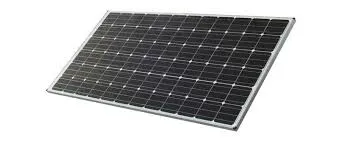solar panel back side
Exploring the Importance of Solar Panel Backsides
The efficiency and longevity of solar panels largely depend not only on their surfaces that absorb sunlight but also on their backsides. While much attention is given to the photovoltaic materials and coatings on the front side, the backside plays a crucial role in the overall performance and durability of solar panels. This article delves into the significance of solar panel backsides, addressing materials, thermal management, and protective functions that contribute to the efficacy of solar energy systems.
Exploring the Importance of Solar Panel Backsides
Moreover, the backside of a solar panel is critical for moisture protection. In many climates, humidity can be a significant concern. Water ingress can lead to corrosion of the photovoltaic cells and other components, hampering performance and lifespan. Therefore, manufacturers often utilize advanced sealing techniques and hydrophobic materials for the backside to create a barrier against moisture. This provides an essential safeguard against environmental factors that could otherwise compromise the integrity of the solar panel.
solar panel back side

Another essential aspect of the backside is its role in structural support and protection. As solar panels are often exposed to harsh weather conditions, including wind, hail, and snow, a robust backside can enhance physical durability. It helps in preventing delamination—a phenomenon where layers of a panel can separate over time, primarily due to stress and environmental exposure. A strong, well-engineered backing can resist mechanical stress, ensuring that the solar cells remain intact and continue to function effectively.
Furthermore, recent innovations have introduced the concept of bifacial solar panels, which utilize both sides for energy capture. In these designs, the backside is engineered to optimize light reflection from the ground or surrounding surfaces, effectively increasing overall energy production. This advancement highlights the backside’s potential as not merely a passive component but as an active player in energy generation, promoting greater efficiency and maximizing returns on investment in solar technology.
In conclusion, the backside of solar panels is a vital component that significantly impacts their efficiency, durability, and overall performance. With the growing demand for renewable energy solutions, understanding the importance of this often-overlooked part of solar panels can lead to more informed choices about solar technologies. From aiding thermal management and protecting against moisture to enhancing structural integrity, the backside truly deserves recognition for its critical role in the solar ecosystem. As solar technology continues to evolve, ongoing research and development in backside materials and designs will undoubtedly lead to even more efficient and resilient solar solutions for the future.
-
Unlocking Energy Freedom with the Off Grid Solar InverterNewsJun.06,2025
-
Unlock More Solar Power with a High-Efficiency Bifacial Solar PanelNewsJun.06,2025
-
Power Your Future with High-Efficiency Monocrystalline Solar PanelsNewsJun.06,2025
-
Next-Gen Solar Power Starts with Micro Solar InvertersNewsJun.06,2025
-
Harnessing Peak Efficiency with the On Grid Solar InverterNewsJun.06,2025
-
Discover Unmatched Efficiency with the Latest String Solar InverterNewsJun.06,2025







